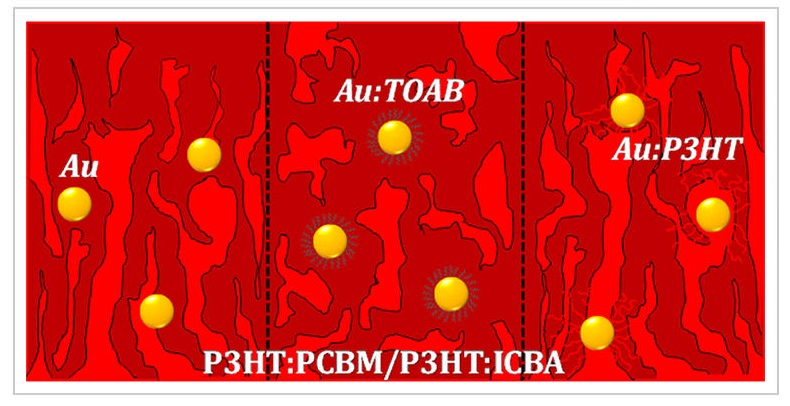Publications
Table of Contents (TOC)
Plasmonic Bulk Heterojunction Solar Cells: The Role of Nanoparticle Ligand Coating
ACS Photonics, 2015, 2 (6), 714-723. DOI: 10.1021/acsphotonics.5b00202
Abstract
There has been a lot of interest regarding the influence of active layer incorporated plasmonic nanoparticles (NPs) in the performance of bulk heterojunction organic photovoltaic (OPV) devices, while both an increase and decrease in performance have been reported. In this paper, following a systematic approach, we demonstrate strong evidence of the critical importance of the NPs ligand shell on the device performance. In particular, it is argued that the plasmonic effect accountable for the performance enhancement takes place only in the case in which the NP’s core is in direct contact with the active layer polymer donor. This can be achieved with the utilization of either ligand-free NPs or NPs terminated with the same polymer donor as the active layer. Using this concept we achieved an enhanced efficiency of 7.16% in OPV devices incorporating the poly(3-hexylthiophene-2,5-diyl) (P3HT):indene-C60 bisadduct (ICBA) active layer. On the contrary, devices with ligand-terminated Au NPs show lower performance, even compared with the reference, NP-free device due to the deteriorated active layer morphology attained, which leads to exciton quenching. These new insights into the plasmonic light-harvesting technology could shed light on the existing controversy and provide guidelines for device design and fabrication.
For citation:
Kymakis, E.; Spyropoulos, G. D.; Fernandes, R.; Kakavelakis, G.; Kanaras, A. G.; Stratakis, E.
"Plasmonic Bulk Heterojunction Solar Cells: The Role of Nanoparticle Ligand Coating"
ACS Photonics, 2015, 2 (6), 714-723. DOI: 10.1021/acsphotonics.5b00202